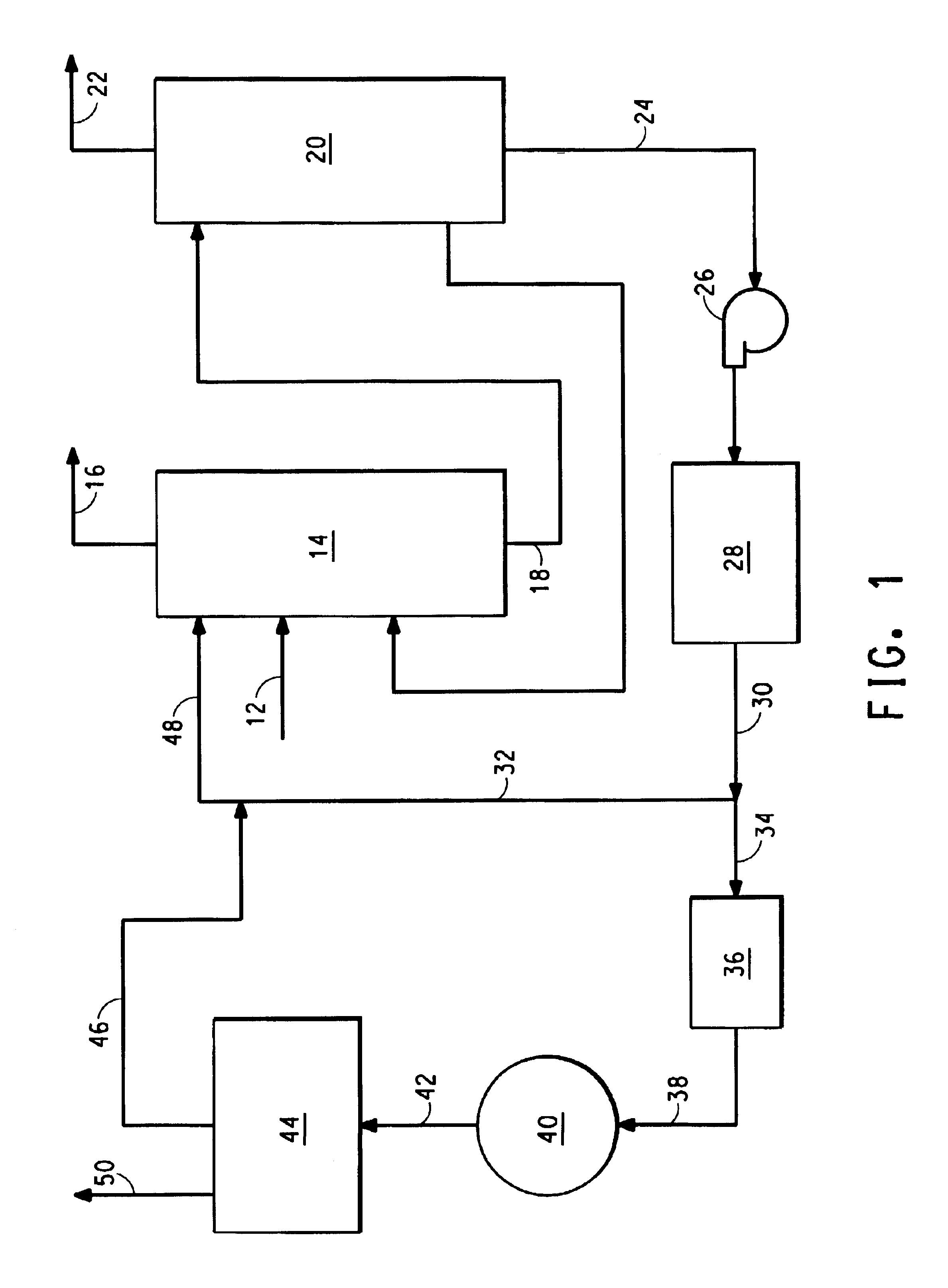Method for removing ammonia from a gas comprising hydrogen cyanide, ammonia and water
- Summary
- Abstract
- Description
- Claims
- Application Information
AI Technical Summary
Benefits of technology
Problems solved by technology
Method used
Image
Examples
Embodiment Construction
Referring now to FIG. 1, there is shown a block diagram illustrating apparatus 10 that embodies the present invention.
An exit gas 12 from an HCN converter (not shown) is fed into an ammonia absorber 14 containing an ammonium phosphate solution having an initial ammonium ion to phosphate ion ratio (lean ammonium phosphate solution) (not shown). The ammonia absorber can be a packed column containing stainless steel packing material. The lean ammonium phosphate solution trickles down the packing where it comes in intimate contact with the converter exit gas and absorbs the ammonia contained in it. The packing provides good contact.
A stream of ammonia-free HCN gas 16 leaves the top of the ammonia absorber 14 for further processing or use. A stream 18 of ammonium phosphate solution with an ammonium ion to phosphate ion ratio higher than that of the lean ammonium phosphate solution (rich ammonium phosphate solution) exits the ammonia absorber and is fed into an ammonia stripper 20. The am...
PUM
 Login to View More
Login to View More Abstract
Description
Claims
Application Information
 Login to View More
Login to View More - R&D
- Intellectual Property
- Life Sciences
- Materials
- Tech Scout
- Unparalleled Data Quality
- Higher Quality Content
- 60% Fewer Hallucinations
Browse by: Latest US Patents, China's latest patents, Technical Efficacy Thesaurus, Application Domain, Technology Topic, Popular Technical Reports.
© 2025 PatSnap. All rights reserved.Legal|Privacy policy|Modern Slavery Act Transparency Statement|Sitemap|About US| Contact US: help@patsnap.com



